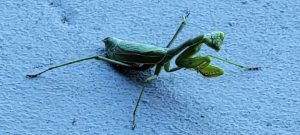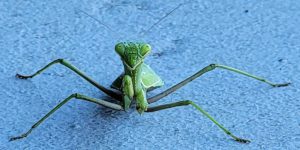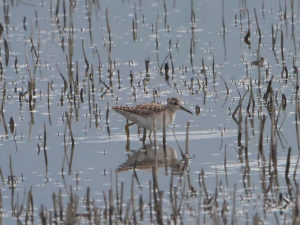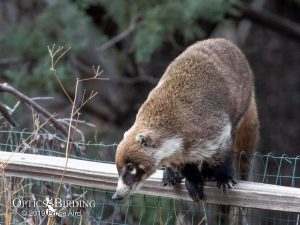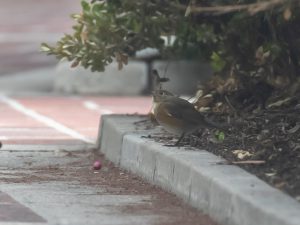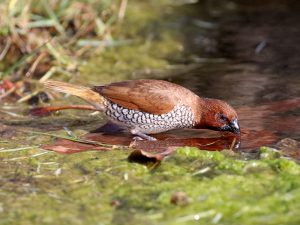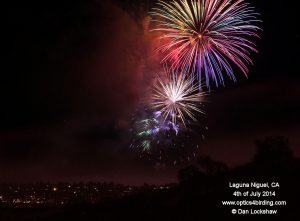A couple of weeks ago, there was a surprise visitor at our door as I arrived to open up. Standing there on the shelf in front of our suite was a Praying Mantis in its famous pose! As you can see in this photo, mantis?s front legs are heavier than the others, with powerful claws for grabbing their victims as they go by. This posture makes mantises look like they are praying while they are preying, hence their name.
There are about 2400 species of mantis worldwide in 430 genera. Most mantises easily camouflage themselves as parts of plants so their prey won?t recognize them until it?s too late. Then they reach out with their lobster-like claws to nab their target. They will sometimes stalk nearby prey.
Mantises have binocular vision. Their eyes are placed at the upper corners of their large triangular head enabling depth perception, and they have flexible necks that allow nearly 180° movement of the head. Their compound eyes have sharp vision in the center and the other lenses provide peripheral vision for detecting the motion of prey or predators. Placement of their eyes on their large triangular head Other species walk on the ground and may be browner in color than the green of the one in these photos. In either case, mantises will eat virtually anything. They are known to eat various insects, small reptiles, and even small birds. They are also preyed upon by larger versions of the same species.
Most mantises have a 1 year life cycle. They mate in the fall and lay their eggs, which hatch in the spring. Some species perform sexual cannibalism, with the females beheading the males and eating them after fertilization. The female then dies, leaving the sturdy eggs to hatch on their own.

